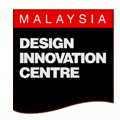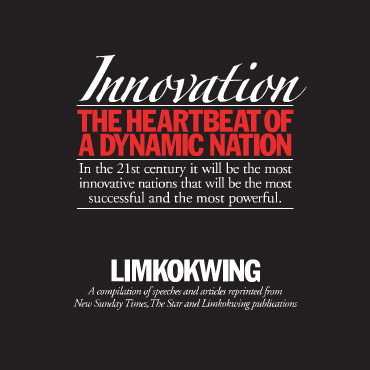Creativity and innovation are subjects of urgent concern at the highest level of the Malaysian Government.
This was reflected by the convening of the National Innovation Summit in April 2004, on the directive of Prime Minister Dato’ Seri Abdullah Ahmad Badawi who also opened it.
The Government has decided to make the conference an annual event.
A National Innovation Council, with the Prime Minister as the chairman, will also be formed to strengthen the national innovation system across all technology areas.
In line with the new push to promote creativity and innovation, a series of articles on the theme “Creative People, Innovative Nation” were published in the business section of the New Sunday Times from February to April 2004. All together, 10 articles were produced and they received prominent play in the newspaper.
The articles were meant to drive home the message that Malaysians and Malaysian companies need to adopt more creative and innovative ways to compete successfully in a globalising world.
They address the fundamental deficiencies in the country’s innovation system, and suggest what must be done.
We need to improve our education system to produce people who are creative, inventive and innovative.
We need companies to believe that innovation is the factor that will drive productivity and quality; that will help them expand their business, increase their profitability and enhance their effort to build markets all over the world.
We need the Government to support and facilitate the private sector to enable it to be competitive and gain access to new markets.
We need to develop a country branding strategy that differentiates us from our competitors; that identifies us as a quality country; that positions us positively in the minds of people around the world.
We need to inculcate a culture of innovation.
That is because innovation is the heartbeat of modern economies.
That is the reason why the world’s most advanced nations are also the world’s most innovative.
Their governments have built economic and social infrastructures that encourage creativity and innovation.
Their people are highly educated, highly skilled, highly competitive.
These countries generate immense wealth from the products they have created, and the brands they have promoted right around the world. These countries produce goods that are perceived to be the best in the world, everywhere in the world.
Because they produce the best goods that the world wants, they become the most competitive, the most successful, the richest.
In the World Economic Forum 2003-2004 Global Competitiveness Report, all the top 25 countries in the Business Competitiveness Index rankings are highly developed economies.
Finland leads the table, which includes the United States, Sweden, Denmark, Germany, Japan, Taiwan and South Korea.
Malaysia is in 26th spot.
Malaysians have the ability to produce quality products that are desired around the world.
Our capabilities are proven by the number of international brands we have created and our ranking as the 17th largest trading nation in the world.
But most of the products we make very well and sell very well do not originate from Malaysians.
Almost 90 per cent of our exports are goods produced by foreign-owned and operated companies in Malaysia, and they use technology developed abroad by foreigners.
We have very little intellectual content, very little intellectual property. Research is very low.
Malaysia is currently only ranked 24th in the world on research and development spending as a share of GDP. We have 7 patents granted for every 1,000 R&D personnel, as compared to Taiwan, South Korea and Japan which each have over 220 patents per 1,000 R&D personnel.
The tremendous gap in R&D between Malaysian and foreign companies is underlined by the performance of Japan’s Matsushita which files 15,000 applications for patents registration annually.
Most companies in Malaysia view intellectual property merely as a means of protection for their products. They don’t see the potential in creating wealth out of IP.
In comparison, around the world, 70 to 99 per cent of the market capitalisation of successful companies comes from IP. That is not happening in Malaysia.
Instead, our people have been making their money from landed property and the stock market. The manufacturing base has largely come from our people producing goods on OEM arrangement.
We are not looking at getting intellectual property or developing intellectual property that will earn us an income over and over again in country after country.
Unless we get serious about creativity and innovation, the transformation from manufacturing to innovation will not happen. And that transformation must happen.
We must develop and produce Malaysian brands of world-class quality, able to penetrate international markets. We must export goods designed by us, using our own research findings, our own local components.
This will ensure that we keep moving up the value chain. It will also ensure that we keep most of the wealth that we create within Malaysia and for Malaysians.

